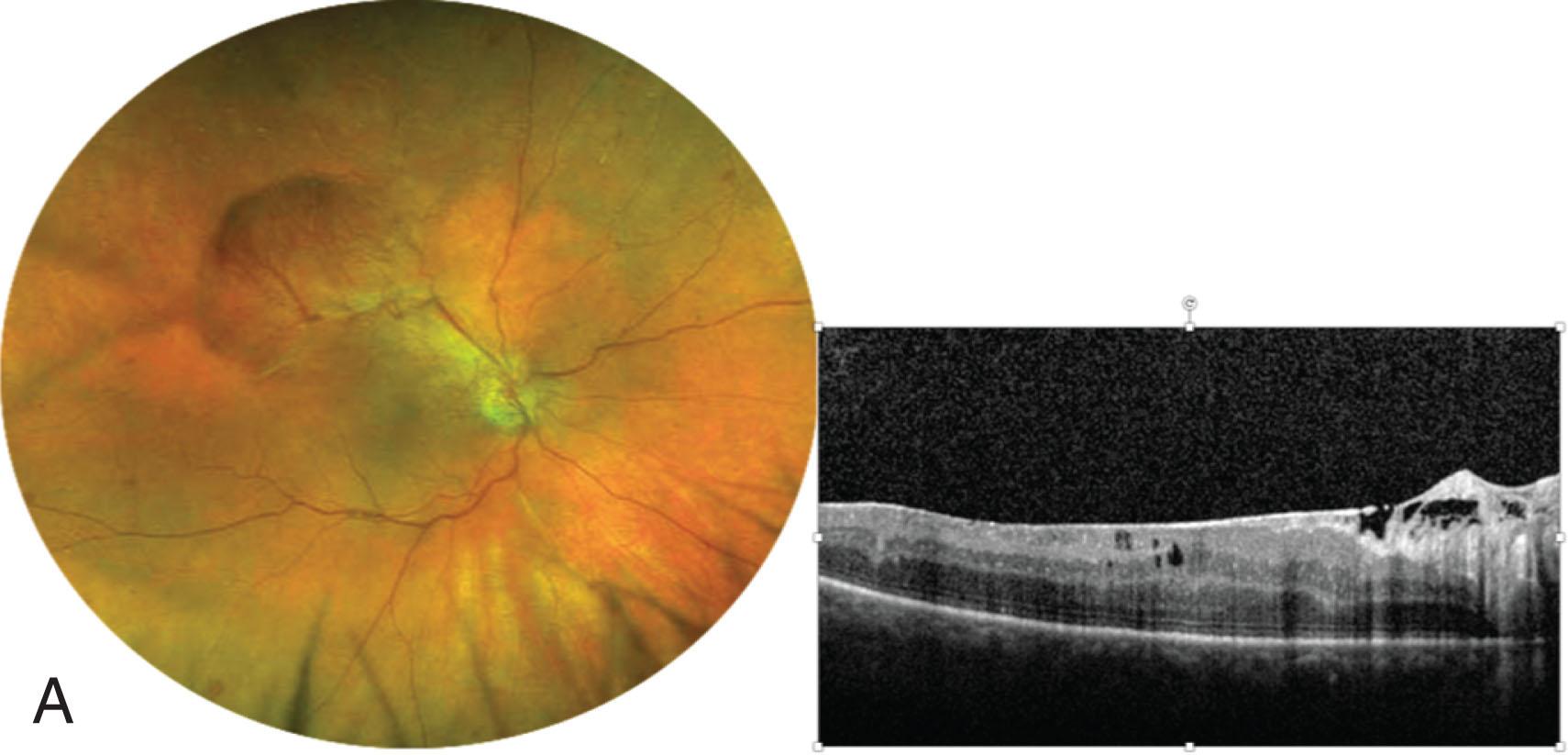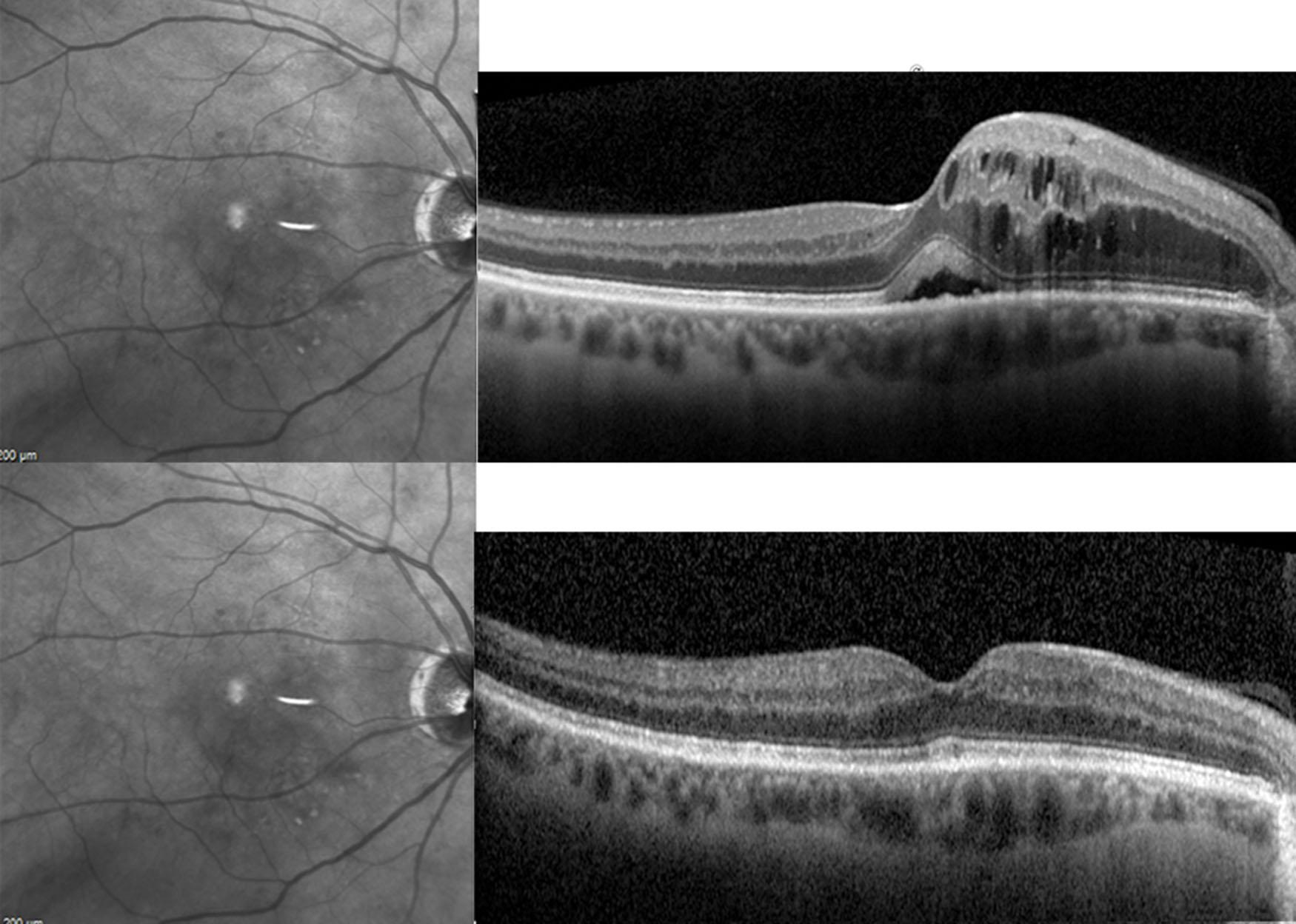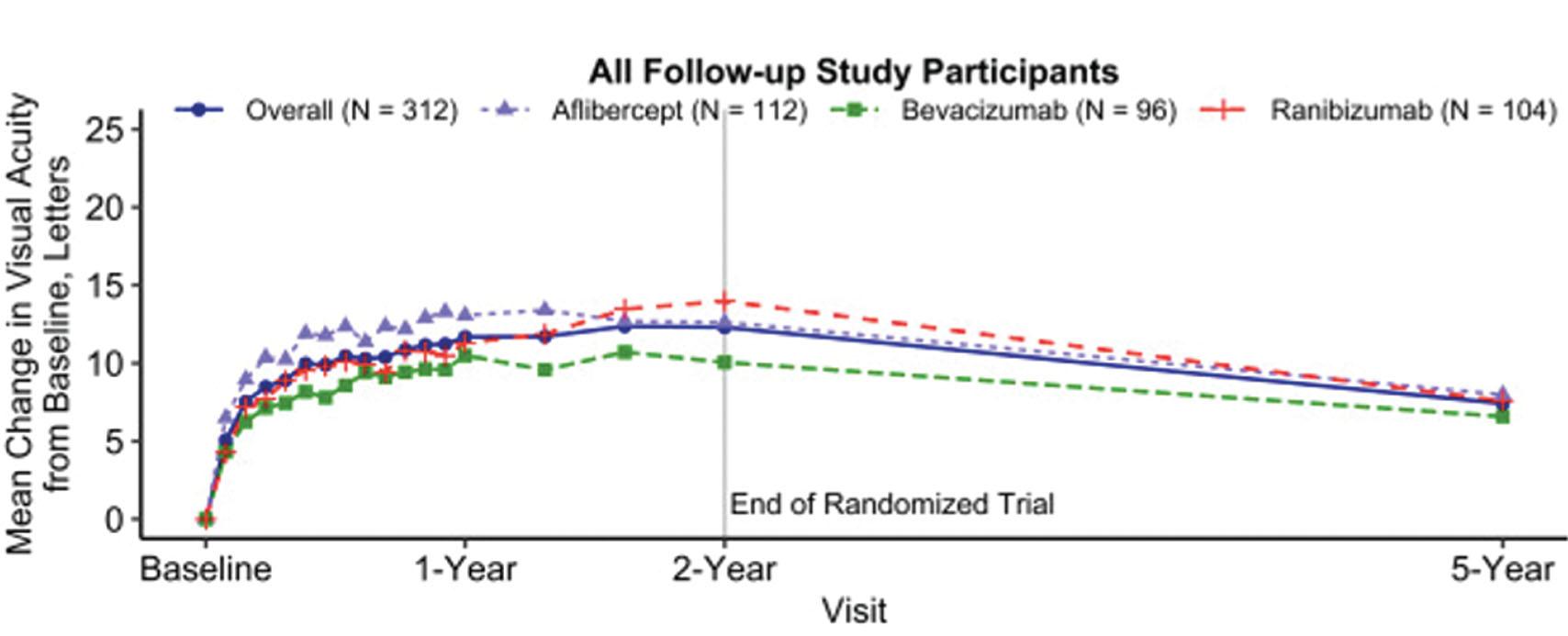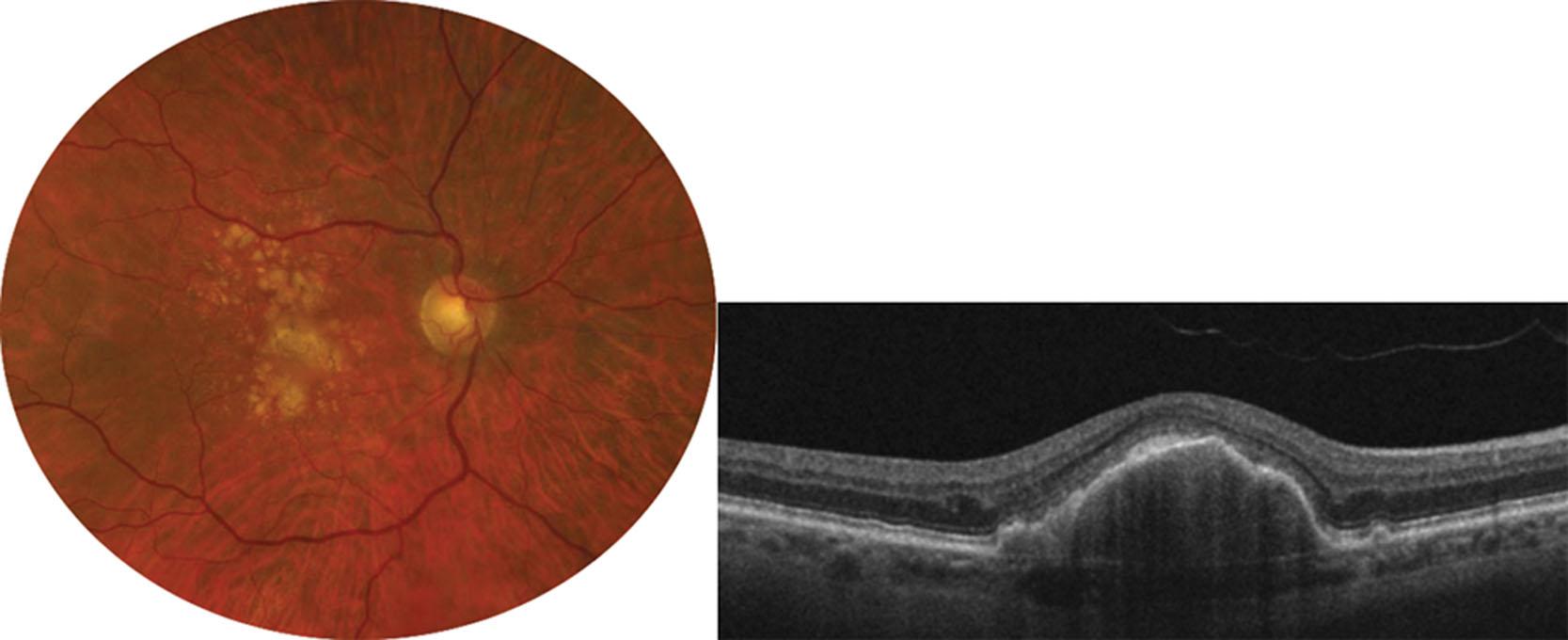Physical Address
304 North Cardinal St.
Dorchester Center, MA 02124
Do not let your cataract surgery get blamed for preexisting retinal disease!
Preoperative identification and management of posterior segment disease, especially vasculopathic macular edema and age-related macular degeneration, are essential.
Optical coherence tomography is a key part of preoperative assessment to help identify macular pathology, especially in multifocal intraocular lens candidates.
Peripheral retinal pathology should be identified preoperatively. Other than a retinal tear, asymptomatic pathology does not always require prophylactic laser before cataract surgery.
Avoid multifocal lenses in patients with current or likely future macular pathology.
Consider combination surgery whenever possible if vitreoretinal pathology and cataract coexist.
Avoid silicone lenses in the setting of any current or potential retinal pathology.
Despite accurate biometry, intraocular lens (IOL) calculations, and flawless cataract surgery, vitreoretinal pathology can lead to disappointing postoperative visual results and unmet patient expectations. A thorough preoperative retinal assessment allows the cataract surgeon to identify and optimize posterior segment pathology before surgery, appropriately counsel patients on vision potential, set realistic expectations, and avoid unhappy postoperative patients.
Vitreoretinal pathology can impact preoperative, intraoperative, and postoperative cataract surgery decision making. We discuss some common conditions encountered in clinical practice.
Pseudophakia is a known risk factor for rhegmatogenous retinal detachment (RRD) along with RRD in the contralateral eye, family history of RRD, posterior vitreous detachment (PVD), male gender, younger age, lattice degeneration, retinal breaks, axial myopia, and disruption of the anterior vitreous at the time of cataract extraction (CE). The prevalence of RRD after CE is approximately 1% and typically occurs 1 to 2 years after surgery. Assessment of the posterior hyaloid status is an important aspect of preoperative evaluation, and optical coherence tomography (OCT) is a useful modality with a high negative predictive value for the presence of a PVD. PVD formation after cataract surgery is a significant factor leading to peripheral retinal breaks and RRD, but cataract patients with preoperative PVD may also develop postoperative retinal tears and RRD from anterior rotation of the vitreous secondary to reduction of lens volume leading to traction at the posterior insertion of the vitreous base. An IOL has a much smaller volume than the crystalline lens, prompting the vitreous to roll forward and occupy this space. All cataract surgery patients and the ancillary staff fielding their perioperative telephone calls should be counseled on the importance of immediate follow-up for the signs and symptoms of a retinal tear or detachment (photopsias, new or worsening floaters, or peripheral visual loss) before and after CE.
Peripheral retinal breaks should be identified before cataract surgery. A careful peripheral examination, preferably with scleral depression for those with retinal detachment risk factors, is an essential part of a cataract consult, along with a careful history with attention to peripheral symptomatology.
Asymptomatic retinal breaks rarely require preventative laser retinopexy with the exception of asymptomatic horseshoe tears where the incidence of RRD formation is around 5%.
Symptomatic flap or horseshoe tears will progress to a RRD in 50% of cases without treatment, and prompt reestablishment of chorioretinal adhesion with retinopexy reduces this risk to under 5%.
Lattice degeneration with or without atrophic holes, operculated retinal holes, and atrophic round holes rarely require treatment. If these are present in the setting of a prior fellow eye RRD, a strong family history of RRD, or any other elevated risk factors, there is no clear consensus if preventative laser is beneficial.
The risks of peripheral laser retinopexy are generally quite low, and we tend to err on the side of treating these breaks when there is any doubt.
Diabetic retinopathy is the most common cause of vision loss in working age adults and affects one third of patients with diabetes. Diabetes is common among patients with visually significant cataract and is itself a known risk factor for cataract development. Despite the well documented risk for progression or development of diabetic retinopathy after cataract surgery, patients may have significant vision improvement regardless of retinopathy staging. It is crucial that all diabetic patients undergo a comprehensive workup for staging of diabetic retinopathy, presence of tractional membranes, diabetic macular edema (DME), and macular ischemia (MI) before prior to cataract surgery.
Proliferative diabetic retinopathy (PDR) occurs when retinal neovascularization develops, leading to vitreous hemorrhage, fibrovascular membrane formation, tractional retinal detachment, and neovascular glaucoma. Pan-retinal photocoagulation (PRP) and anti-vascular endothelial growth factor (VEGF) injections remain the preferred method for managing PDR. PDR and its treatment can be associated with significant tractional epiretinal membrane formation. These membranes occur across a spectrum ranging from severe blinding tractional retinal detachment and “crunch syndrome” to subtle vitreoretinal traction, thickening of the cortical vitreous leading to posterior hyaloidal traction (PHT), and vitreopapillary traction ( Fig. 39.1AB ). Subtle but visually significant tractional diabetic membranes such as PHT can easily be missed on clinical examination especially in the setting of significant cataract. Useful tips include:
Preoperative OCT reveals subtle membranes.
Determine visual significance of membranes preoperatively.
Avoid silicone IOLs or multifocal IOLs (MFIOLs) in patients with diabetic maculopathy.
Combination CE and PPV is safe and may be preferred in patients with PDR and cataract.
Set realistic visual expectations preoperatively.

Breakdown of the blood aqueous barrier from diabetic microangiopathy facilitates the release of inflammatory cytokines, increases vascular permeability, and causes DME. This process may be exacerbated by inflammation associated with cataract surgery. Aggressive pre- and postsurgical DME management is vital to maximize visual outcomes. Many treatment options exist for controlling DME including medical management of glycemia and systemic hypertension, focal laser photocoagulation, intravitreal anti-VEGF agents, and both subtenon and intravitreal corticosteroids. Intravitreal anti-VEGF injections remain the mainstay of DME therapy, with both DME and visual acuity (VA) benefits often plateauing after three to four monthly injections. All commonly used anti-VEGF agents improve VA and decrease central macular thickness ( Fig. 39.2 ), but the burden of monthly treatments is challenging for diabetic patients and potentially unrealistic for many. Sustained-release glucocorticoid preparations effectively treat DME with reduced treatment burden, but patients should be monitored for intraocular pressure. Key pearls for cataract management in the setting of DME include:
Macular OCT is essential for DME management ( Fig. 39.3 ).

Stabilize and optimize DME preoperatively.
Suspect MI if anti-VEGF and or steroid injections fail to improve the DME.
With persistent DME, do not let cataract surgery disrupt DME therapy.
When PHT or epiretinal membrane contribute to DME treatment-resistance, consider combination phaco-vitrectomy with membrane peeling and ILM peeling.
Consider anti-VEGF injections 2 weeks before and 2 weeks after CE or a preoperative intermediate acting steroid injection for patients at high risk for DME postoperative progression.
Consider adding 40 mg of preservative-free dexamethasone into the 500 mL infusion bottle intraoperatively to reduce inflammation.

MI, with or without DME or PDR, may also significantly limit visual potential in patients with diabetic retinopathy. Intravenous fluorescein and more recently OCT-angiography both effectively identify MI. Conventional OCT is less sensitive for detecting MI. Diagnosing the presence and extent of MI is essential prior to cataract surgery. Despite no available therapies to reverse MI, establishing this diagnosis prior to cataract surgery allows for realistic patient expectations, proper IOL selection and proactive surgical planning with topical, intracameral, or subconjunctival anesthesia, to lower the risk of transient orbital compartment syndrome that occurs in the setting of large retro or periocular blocks. In addition, lower infusion pressures and “slow-mo” phaco techniques may reduce the risk for surgery related vascular occlusions.
Although separate diseases with their own nuances for diagnosis and treatment are beyond the purview of this chapter, it is important for the cataract surgeon to remain cognizant of other nondiabetic vascular diseases such as retinal arterial and venous occlusion, ocular ischemic syndrome, and sickle cell retinopathy, among others. Many of the general principles applicable to cataract surgery in diabetics can be applied to cataract patients with nondiabetic retinal vasculopathies. Proliferative disease should be controlled, macular edema should be treated, and the perfusion status of the eye should be understood ( Fig. 39.4 ). As with diabetic retinopathy, cataract surgery should not interrupt retinal treatment regimens.


Become a Clinical Tree membership for Full access and enjoy Unlimited articles
If you are a member. Log in here